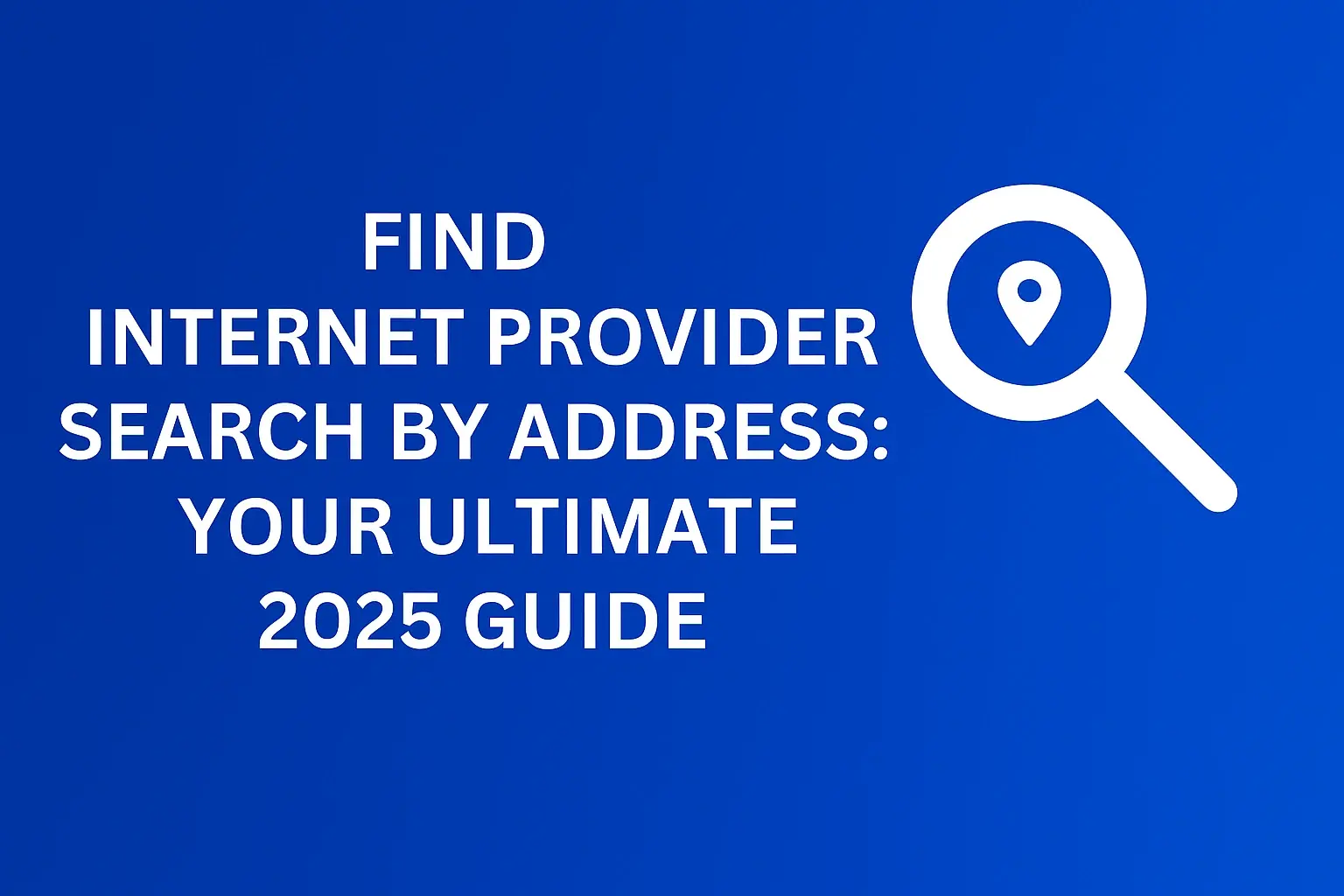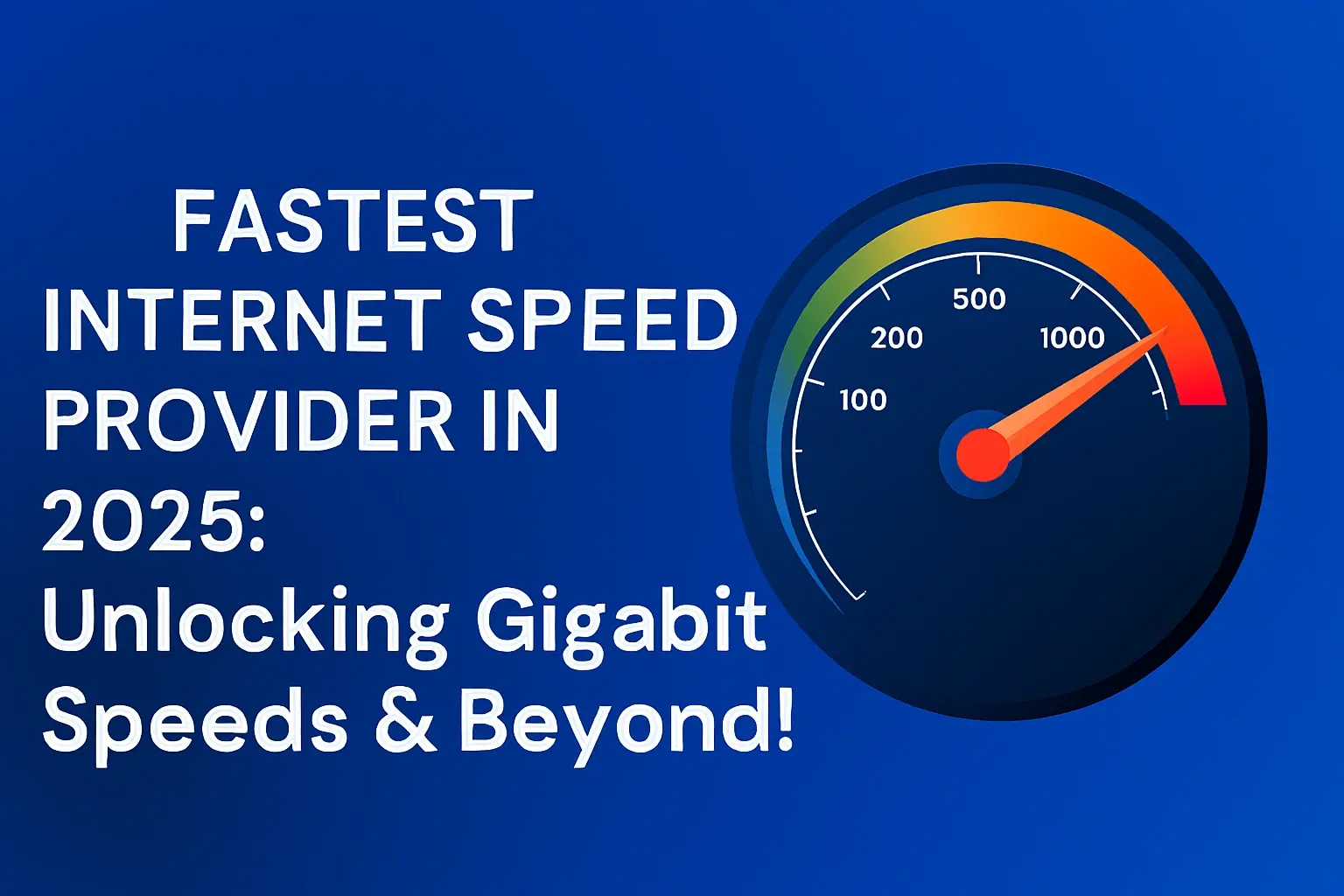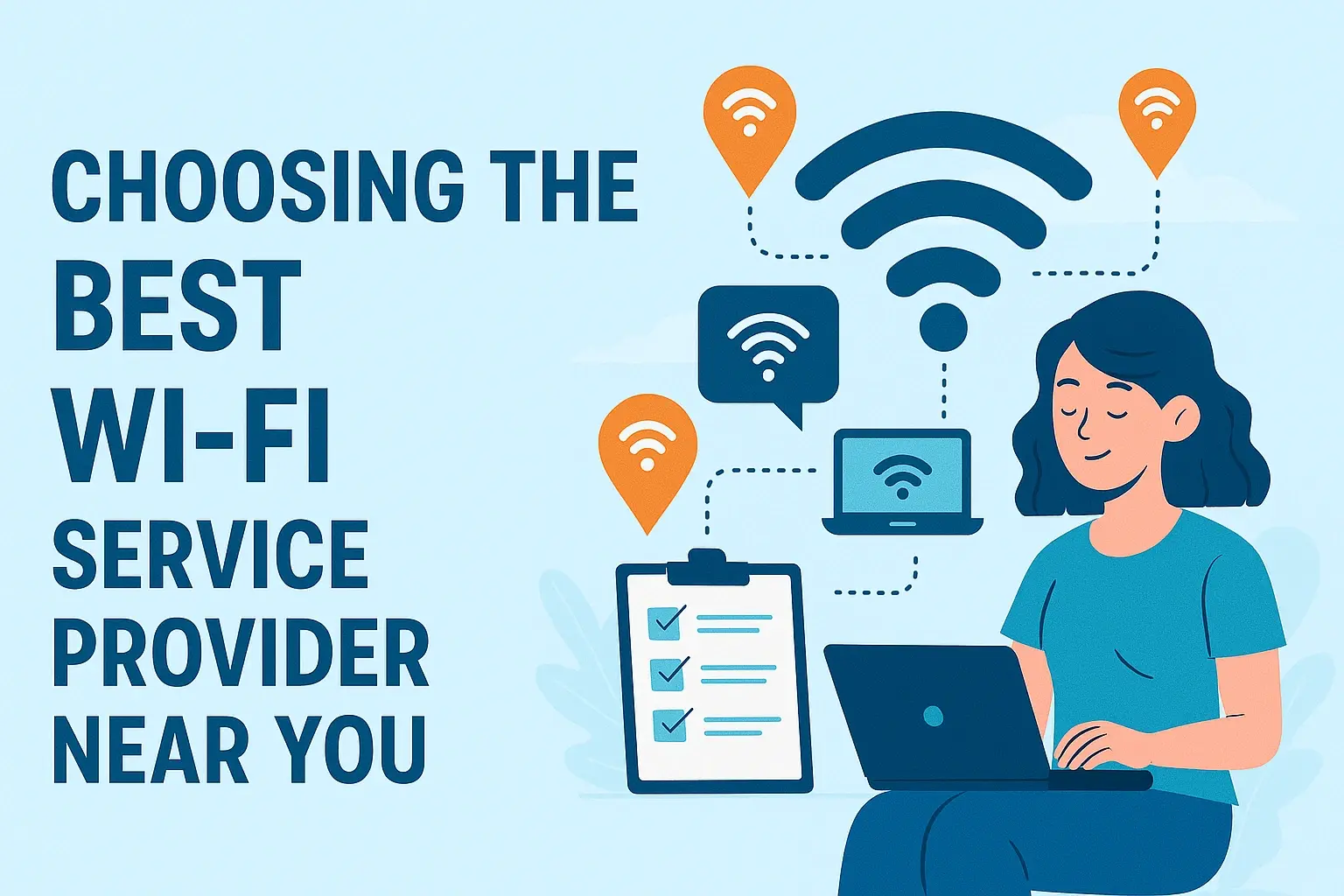Boost Productivity with Business Phone and Internet Bundles

Discover how bundling business phone and internet services in 2025 can significantly boost your company's productivity, streamline operations, and reduce costs. This comprehensive guide explores the benefits, key features, and strategic advantages of integrated communication solutions for modern businesses.
Unlocking Peak Performance: The Synergy of Business Phone and Internet Bundles
In the dynamic business environment of 2025, operational efficiency and seamless communication are no longer luxuries; they are fundamental pillars of success. Businesses of all sizes are constantly seeking ways to optimize their resources, enhance collaboration, and maintain a competitive edge. One of the most impactful yet often overlooked strategies for achieving these goals lies in the intelligent integration of essential business services: phone and internet. Bundling these critical components offers a potent synergy, transforming them from disparate utilities into a cohesive, productivity-driving engine. This article delves deep into the world of business phone and internet bundles, exploring how they can revolutionize your operations, reduce overhead, and empower your team to achieve unprecedented levels of performance. We will examine the core benefits, current trends shaping the market in 2025, and provide actionable insights to help you make the most informed decisions for your organization.
The modern workplace is characterized by its interconnectedness. Whether your team is co-located in a single office, distributed across multiple branches, or operating entirely remotely, reliable and robust communication infrastructure is paramount. Traditional approaches often involve managing separate contracts for phone lines, internet access, and potentially other communication tools. This fragmentation can lead to increased administrative burden, duplicated costs, and a lack of integration that hinders workflow. Business phone and internet bundles, however, present a streamlined solution. By consolidating these services under a single provider and a single bill, businesses can unlock significant advantages. These advantages extend beyond mere cost savings, encompassing enhanced reliability, simplified management, access to advanced features, and a foundation for scalable growth. As we navigate the complexities of the 2025 business landscape, understanding the power of these integrated solutions becomes increasingly vital for any forward-thinking enterprise.
Deconstructing the Bundle: Essential Components and Their Impact
A comprehensive business phone and internet bundle is more than just a package deal; it's a carefully curated suite of services designed to meet the diverse communication needs of a modern enterprise. Understanding each component and its role is crucial for appreciating the full value proposition.
Business Phone Services
This is often the most varied part of the bundle. In 2025, business phone services have evolved significantly beyond basic landlines. Key components include:
- VoIP (Voice over Internet Protocol): This is the cornerstone of modern business telephony. VoIP converts voice signals into digital data packets that are transmitted over the internet. This technology offers immense flexibility, allowing for features like call forwarding, voicemail-to-email, video conferencing, and integration with other business applications. By 2025, over 85% of businesses are expected to be utilizing VoIP solutions, driven by their cost-effectiveness and feature-rich capabilities.
- PBX Systems (Private Branch Exchange): While traditional hardware PBXs are becoming less common, cloud-hosted PBX systems (often referred to as UCaaS - Unified Communications as a Service) are integral to bundles. These systems manage internal and external calls, offering features like auto-attendants, hunt groups, call queues, and sophisticated call routing. Cloud PBXs provide scalability and reduce the need for on-premises hardware maintenance.
- Dedicated Business Lines: While VoIP is dominant, some bundles may still offer dedicated business lines for enhanced reliability or specific regulatory needs. These are distinct from residential lines and come with business-grade features.
- Advanced Features: Modern bundles often include features like unlimited local and long-distance calling, international calling plans, virtual phone numbers (allowing businesses to have local numbers in different areas), and mobile app integration for seamless communication across devices.
Business Internet Services
Reliable, high-speed internet is the backbone of any digital business operation. In 2025, the expectations for internet service have risen considerably:
- High-Speed Connectivity: Bundles typically offer a range of speeds, from robust broadband to dedicated fiber optic connections. The average business internet speed requirement has increased by an estimated 30% since 2022, fueled by cloud adoption, video conferencing, and data-intensive applications. Businesses need speeds that support simultaneous use by multiple employees without lag.
- Reliability and Uptime Guarantees: Business-grade internet comes with Service Level Agreements (SLAs) that guarantee a certain level of uptime (e.g., 99.9%). This is critical for minimizing downtime, which can be incredibly costly. Bundled services often prioritize this reliability.
- Symmetrical Speeds: Fiber optic connections often offer symmetrical upload and download speeds, which are crucial for businesses that rely heavily on cloud backups, video conferencing, and hosting their own servers or applications.
- Static IP Addresses: Many business internet plans include static IP addresses, which are essential for hosting websites, running VPNs, and ensuring secure remote access.
- Managed Wi-Fi and Network Solutions: Some advanced bundles may include managed Wi-Fi services, network security features, and even basic network management to ensure optimal performance and security.
The Synergy: Why Bundling Matters
The true power of a bundle lies in the integration. When phone and internet services are managed by a single provider:
- Cost Savings: Providers often offer discounts when services are bundled, reducing your overall monthly expenditure. This also simplifies billing, with one invoice instead of multiple.
- Simplified Management: Dealing with one point of contact for technical support, billing, and service inquiries streamlines administrative tasks.
- Enhanced Reliability: Providers can better manage network resources when both voice and data traffic are under their purview, often leading to improved quality of service and fewer disruptions.
- Scalability: Bundled solutions are typically designed to scale with your business. Adding new lines, increasing internet speed, or incorporating new features is often a straightforward process.
- Integrated Features: Many modern bundles allow for seamless integration between your phone system and internet-based applications, such as CRM software, allowing for click-to-call functionality or automatic call logging.
The 2025 Landscape: Evolving Trends in Business Communication Bundles
The telecommunications and internet service provider (ISP) market is in constant flux, and 2025 is no exception. Several key trends are shaping the offerings and adoption of business phone and internet bundles:
The Dominance of UCaaS (Unified Communications as a Service)
UCaaS platforms are increasingly becoming the central nervous system for business communications. In 2025, bundles are less about just phone and internet and more about integrating voice, video conferencing, instant messaging, collaboration tools, and even project management software into a single, cloud-based platform. Gartner predicts that the UCaaS market will continue its robust growth, exceeding $100 billion globally by 2025. This trend means that bundles are now offering a more holistic communication solution, moving beyond basic calling to facilitate richer team interaction and remote work enablement.
AI-Powered Features and Automation
Artificial intelligence is no longer a futuristic concept; it's a present-day reality enhancing business operations. In 2025, you'll find AI features integrated into communication bundles, such as:
- Intelligent Call Routing: AI analyzes caller intent and routes them to the most appropriate agent or department, improving customer satisfaction and agent efficiency.
- AI-Powered Voicemail Transcription: Voicemails are automatically transcribed into text, allowing for quick review and searchability.
- Real-time Translation: Facilitating communication with international clients or team members.
- Sentiment Analysis: For customer service applications, AI can analyze call sentiment to identify potential issues or areas for improvement.
- Automated Support Bots: Integrated chatbots can handle initial customer inquiries, freeing up human agents for more complex issues.
Enhanced Cybersecurity Measures
With the increasing sophistication of cyber threats in 2025, cybersecurity is a paramount concern for businesses. ISPs are integrating more robust security features into their bundles. This includes advanced firewalls, intrusion detection systems, secure VPN access for remote employees, and protection against DDoS (Distributed Denial of Service) attacks. Data breaches cost businesses an average of $4.35 million in 2024, making proactive security measures within communication bundles a non-negotiable aspect for many organizations.
5G Integration and Next-Gen Connectivity
While fiber optic remains the gold standard for fixed-line internet, the rollout and adoption of 5G technology are rapidly changing the landscape. In 2025, some bundles may incorporate 5G capabilities for:
- Enhanced Mobile Workforce Support: Providing high-speed, reliable internet access for employees working remotely or on the go.
- Backup Connectivity: Offering 5G as a failover solution in case of primary internet outages.
- IoT Integration: Supporting the growing number of connected devices in the workplace.
Focus on Scalability and Flexibility
Businesses today need solutions that can adapt quickly to changing needs. Bundles in 2025 are designed with this in mind, offering easy-to-scale plans. Whether you need to add users, increase bandwidth, or upgrade features, providers are making these adjustments more seamless and often self-service through online portals.
Sustainability and Green Initiatives
An emerging trend in 2025 is the consideration of sustainability. Some providers are highlighting their use of renewable energy in data centers or offering energy-efficient equipment, appealing to businesses with strong Corporate Social Responsibility (CSR) goals.
Your Roadmap to Integration: A Step-by-Step Guide to Choosing and Implementing
Selecting and implementing the right business phone and internet bundle requires a strategic approach. Follow these steps to ensure you make the best choice for your organization in 2025.
Step 1: Assess Your Current and Future Needs
Before you even look at providers, understand your business's communication requirements. Consider:
- Number of Employees: How many users will need phone lines and internet access?
- Call Volume and Type: Do you make many local, long-distance, or international calls? Do you require advanced call center features?
- Internet Usage: What are your typical internet activities? (e.g., web browsing, large file transfers, video conferencing, cloud applications, hosting services).
- Bandwidth Requirements: Estimate the total bandwidth needed for all users and applications simultaneously. Tools are available online to help calculate this.
- Remote Work Policy: How many employees work remotely, and what are their connectivity needs?
- Required Features: List essential features like auto-attendant, voicemail-to-email, CRM integration, video conferencing, etc.
- Scalability Needs: How do you anticipate your business growing in the next 1-3 years?
- Budget: Determine a realistic monthly budget for these services.
Step 2: Research Potential Providers
Identify reputable providers that offer business-grade phone and internet bundles in your geographic area. Look for companies with a strong track record in business services. Consider:
- Local vs. National Providers: Local providers might offer more personalized service, while national carriers may have broader network coverage and more advanced technology.
- Customer Reviews and Ratings: Check independent review sites for feedback on reliability, customer support, and overall satisfaction.
- Service Offerings: Do they offer the specific technologies (e.g., fiber optic, VoIP, UCaaS) and features your business needs?
- Service Level Agreements (SLAs): Understand their guarantees for uptime and support response times.
Step 3: Request Quotes and Compare Packages
Once you have a shortlist, request detailed quotes. Be sure to compare:
- Pricing: Look beyond the advertised price. Understand all fees, including installation, equipment, and potential overage charges. Compare the total monthly cost for comparable service levels.
- Included Features: Ensure all essential features you identified in Step 1 are included.
- Contract Terms: Pay close attention to contract length, early termination fees, and any price increase clauses. Many providers offer 1-3 year contracts.
- Equipment: Is VoIP hardware (phones, routers) included, leased, or do you need to purchase it separately?
- Support Options: What are their support hours? Is 24/7 support available? What channels (phone, chat, email) are offered?
Step 4: Negotiate and Finalize the Agreement
Don't be afraid to negotiate. Providers often have flexibility, especially for new business customers. You might be able to negotiate:
- Monthly Rates: Especially for longer contract terms.
- Installation Fees: Sometimes these can be waived or reduced.
- Included Features: You might get a premium feature added at no extra cost.
Once you've agreed on terms, carefully review the contract before signing. Ensure all agreed-upon details are accurately reflected.
Step 5: Plan for Implementation and Installation
Work with the provider to schedule installation. This typically involves:
- Site Survey: The provider may conduct a survey to assess your location's infrastructure.
- Installation Appointment: A technician will install necessary equipment (modems, routers, phone jacks if needed).
- Configuration: Setting up your phone system, including extensions, auto-attendants, and user profiles.
- Testing: Thoroughly test all phone lines, internet connectivity, and key features to ensure they are working correctly.
Step 6: Train Your Team and Monitor Performance
Provide adequate training to your employees on how to use the new phone system and any associated software. Regularly monitor your internet speed and phone service performance. Stay in communication with your provider if you encounter any issues. Most providers offer online portals where you can monitor usage and performance metrics.
Bundle Breakdown: Comparing Popular Service Provider Offerings
The market for business phone and internet bundles is competitive, with several major players offering various packages. While specific pricing and feature sets change frequently and are highly dependent on location and business size, here's a general comparison of typical offerings from prominent providers in 2025. We'll use hypothetical "Provider A" (often a national telecom giant) and "Provider B" (potentially a more specialized business ISP or UCaaS provider) to illustrate common distinctions.
| Feature | Provider A (e.g., Major Telecom) | Provider B (e.g., Specialized Business ISP/UCaaS) |
|---|---|---|
| Core Technology | Often a mix of DSL, Cable, and Fiber. May offer more traditional telephony alongside VoIP. | Primarily Fiber optic and advanced VoIP/UCaaS solutions. Focus on cloud-native services. |
| Internet Speeds | Wide range, from basic broadband to gigabit speeds. Availability of highest speeds may be limited to specific areas. | Often starts at higher speeds (e.g., 100 Mbps symmetrical) and goes up to multi-gigabit fiber. More consistent high-speed availability in served areas. |
| Phone System (VoIP/UCaaS) | May offer basic VoIP services or a more comprehensive UCaaS platform. Features can vary significantly by plan tier. | Typically offers robust, feature-rich UCaaS platforms with advanced collaboration tools, video conferencing, and integration capabilities. Often built on modern cloud infrastructure. |
| Included Features (Phone) | Basic features like voicemail, call waiting, caller ID. Advanced features (auto-attendant, call queues) may be add-ons or in higher tiers. | Comprehensive suite: auto-attendant, advanced call routing, voicemail-to-email, mobile apps, team messaging, video conferencing, CRM integrations often included in standard business plans. |
| Service Level Agreements (SLAs) | May offer SLAs, but they can sometimes be less stringent for bundled services compared to dedicated enterprise solutions. | Generally offers strong uptime guarantees (e.g., 99.9% or higher) and responsive support with clearly defined SLAs. |
| Customer Support | Varies widely. May involve large call centers with potentially longer wait times. Dedicated business support teams exist but can be tiered. | Often provides more specialized business support, sometimes with dedicated account managers. Focus on faster resolution times for business clients. |
| Pricing Structure | Can be competitive, especially for basic packages. However, add-ons and premium features can increase costs significantly. May have more hidden fees. | Often perceived as higher upfront, but value is in the comprehensive feature set and reliability. Transparent pricing with fewer hidden fees is common. Focus on total cost of ownership. |
| Scalability | Scalable, but adding services or upgrading may involve more complex processes or longer lead times. | Designed for easy scalability. Adding users or increasing bandwidth is typically a straightforward, often self-service, process. |
| Target Audience | Small to medium businesses (SMBs) looking for a one-stop shop, potentially prioritizing cost savings on basic services. | SMBs and enterprises focused on advanced communication, collaboration, reliability, and integrated solutions. Businesses prioritizing productivity and future-proofing. |
Key takeaway: Provider A might offer a lower entry price for basic needs, while Provider B typically delivers a more robust, feature-rich, and reliable solution geared towards maximizing productivity and long-term business value. Always get a personalized quote and thoroughly vet the contract details.
Maximizing Your Investment: Best Practices for Business Phone and Internet Bundles
Simply purchasing a bundle is only the first step. To truly unlock its potential and maximize your return on investment in 2025, adopt these best practices:
1. Thoroughly Train Your Staff
A common pitfall is deploying new technology without adequate user training. Ensure all employees understand how to use the phone system's features, the collaboration tools, and any integrated applications. Provide ongoing training as new features are rolled out or as staff changes. Effective training directly correlates with increased adoption and productivity gains.
2. Leverage Advanced Features
Don't let advanced features go unused. Actively implement and utilize features like auto-attendants for efficient call routing, voicemail-to-email for quick message access, conferencing for team meetings, and CRM integration for streamlined customer management. Explore the full capabilities of your bundle; they are there to enhance efficiency.
3. Optimize Network Performance
Your internet connection is crucial for VoIP and other online services. Ensure your network is optimized:
- Quality of Service (QoS): Configure your router to prioritize voice traffic over less critical data. This ensures clear call quality even during peak internet usage.
- Secure Wi-Fi: Use strong passwords and encryption for your Wi-Fi networks. Consider separate networks for guests.
- Regularly Monitor Speeds: Periodically test your internet speeds to ensure you are receiving the performance you are paying for.
4. Prioritize Security
With integrated services, security is paramount. Ensure your provider offers robust security features and that you are implementing them correctly. This includes strong passwords for all devices and accounts, regular software updates, and awareness training for employees regarding phishing and social engineering attacks.
5. Establish Clear Support Protocols
Know who to contact and how when issues arise. Keep your provider's support contact information readily accessible. Understand their escalation procedures. For internal issues, designate a point person or team responsible for managing the communication system.
6. Regularly Review Your Service Agreement
As your business evolves, your communication needs may change. Periodically review your bundle agreement (e.g., annually) to ensure it still meets your requirements. Are you paying for features you don't use? Do you need to upgrade your internet speed or add more phone lines? Proactive review can lead to cost savings and improved efficiency.
7. Integrate with Other Business Tools
The true power of modern communication bundles lies in integration. Explore how your phone system can connect with your CRM, helpdesk software, or productivity suites. This allows for automated data entry, click-to-call from contact lists, and a more unified workflow, significantly boosting productivity.
Beyond the Basics: Advanced Strategies for Unified Communications
For businesses looking to truly leverage their communication infrastructure in 2025, moving beyond basic bundling to advanced unified communications strategies can provide a





